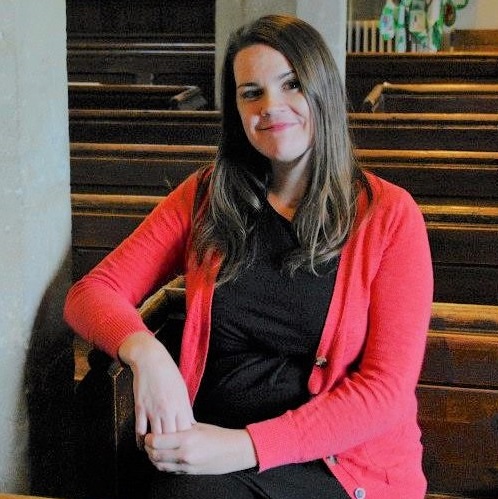Commentary on Matthew 4:12-23
Matthew’s account of the beginning of Jesus’ ministry and the call of his first disciples is a tale of two kingdoms. Matthew 4:12-23 demonstrates the call for allegiance required to be part of the Kingdom of Heaven. This allegiance runs counter to Roman imperial claims to lives, labor, and land.
Galilee of the Gentiles
Matthew 4:12-13 reports that “Jesus heard that John [the Baptist] had been arrested.” John’s arrest, seemingly the catalyst for Jesus’ ministry, spurs Jesus to move from Nazareth to “Capernaum, by the sea, in the territory of Zebulun and Napthtali.”
Zebulun and Naphtali, of course, were two of the sons of Jacob and therefore tribes of Israel. Zebulun was the youngest son of Leah while Naphtali was the younger son of Bilhah, the woman enslaved to Rachel. Their tribal territorial allotments in the Promised Land, outlined in Joshua 19:10-16 and 32-39, were to the west of the Sea of Galilee and, by Jesus’ time, included the region of Galilee. Thus, Jesus is “God with us” (1:23) in the Promised Land; and yet, that land is currently under Roman (in other words, Gentile) occupation.
Matthew underscores the occupation of the land by Gentiles by quoting Isaiah 9:1-2: “Land of Zebulun, land of Naphtali, on the road by these, across the Jordan, Galilee of the Gentiles—the people who have sat in darkness have seen a great light, and for this who sat in the region and shadow of death light has dawned.”
In Isaiah’s time, the lands of Naphtali and Zebulun were under the dominion of another imperial power: the Assyrians who conquered the northern kingdom of Israel in 733-732 BCE. Isaiah’s prophecy was written in anticipation of a future king whose reign, the prophet hoped, would restore these lands and reunite the nations of Israel and Judah.1 While Isaiah was likely referring to King Hezekiah, the author of Matthew envisions the fulfillment of this prophecy with Jesus.
After Jesus moves to Capernaum in “Galilee of the Gentiles,” he begins preaching repentance because the “kingdom of heaven has come near,” a theme fleshed out (quite literally in the person of Jesus) in the rest of the Gospel. For Matthew, there seems to be a connection between this vision of a restored Israel and repentance.
Repentance is a prophetic call to return to God and follow God’s law. The pre-exilic prophets, like Isaiah, encouraged repentance. They subscribed to a theological paradigm scholars refer to as the Deutoronomism. This is a perspective that is prominent in the prophets as well as Deuteronomy, Judges, Joshua, 1-2 Samuel, and 1-2 Kings. In this view, obedience to Torah results in blessings by God, while disobedience will result in penalties/punishments.
While Deuteronomy through 2 Kings use this theological lens to understand their history, the pre-exilic prophets use this lens to encourage repentance in order to avoid future punishment. Jesus, taking a different approach, encourages repentance because “the kingdom of heaven has come near.”
The Kingdom of Heaven has come near
By “has come near” Jesus could be referring to a temporal shift. That is, God’s rule is near in that it will soon begin so people should prepare themselves. It could also mean that Jesus understood himself to be the embodiment of God’s kingdom, thus the nearness is found in proximity to Jesus. Either way, Jesus’ message is clear: God is acting in the world.
The language of “kingdom” sets up God’s rule in direct opposition to Rome’s rule, thus repentance could also be understood as a choosing of allegiances. The very thing that the two sets of brothers are asked to do when Jesus calls them in 4:18-22.
When Jesus first sees the brothers Andrew and Simon Peter, they are fishing on the sea of Galilee. He says to them “Follow me, and I will make you fish for people” (4:19). He then sees two more brothers, James and John, in their boat with Zebedee, their father. They are mending their nets. Matthew 4:21 simply says “and he called them.” These brothers also immediately follow Jesus.
Some have wondered why Simon Peter and Andrew would walk away so quickly. Did they know Jesus beforehand? Were the sons of Zebedee more likely to follow Jesus because they saw the encounter with Simon Peter and Andrew? Were the men somehow disgruntled in their work? Were the sons of Zebedee disgruntled with their father?
While these are interesting questions, they cannot be answered by the text as we have it. Instead, by thinking about the call to repentance immediately preceding, the story indicates that the brothers chose their allegiance, even if we do not know why they did it so quickly.
How is this choosing an allegiance, you ask? As fishermen, Warren Carter notes that these sets of brothers were likely under contract with the Roman Empire. “As brothers, and possibly members of a cooperative with James and John (4:21), they have purchased a lease or contract with Rome’s agents that allows them to fish and obligates them to supply a certain quality of fish.”2 Their actions in following Jesus were a disruption, even if small, to Rome’s economic interests.
By choosing Jesus, the brothers choose God’s rule over Rome. They choose to “fish” their land and the people in it for God’s purposes rather than exploiting it for Rome’s gain. They choose to join Jesus’ ministry in the Promised Land rather than to align themselves with the interests of the occupiers. Rome wanted the men to catch fish to advance their imperialist expansion. Jesus wants them to catch people for God’s rule, which as Jesus will demonstrate throughout the rest of the Gospel, is a rule of mercy and justice and plenty.
Notes
- Ackerman, Susan. Isaiah in The New Interpreter’s Study Bible, 970 n. 9:1-2.
- Carter, Warren. Matthew and the Margins: A Sociopolitical and Religious Reading. Orbis Books: Maryknoll, NY (2000), 121.


January 22, 2023